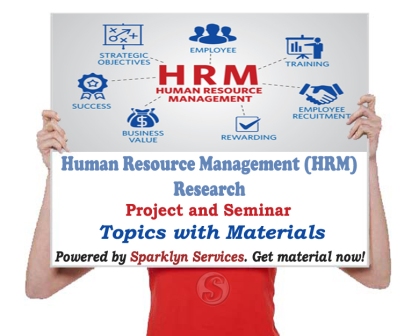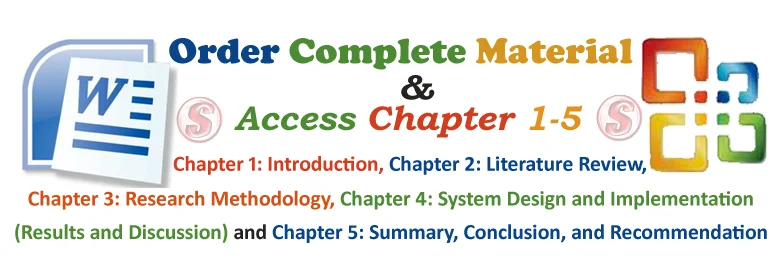1.1 Introduction
Work-Life Balance is a contemporary and familiar concept to all the workforces around the world. Work and home life are considered as similar entities, placing competing demands on our resources but remaining distinct in terms of time and location (Duxbury et al., 2011). Work-life balance is meaningful achievement and enjoyment in everyday life. In recent years, “work-family balance” is used instead of the term “work-life balance” (Cousins et al., 2005). People are searching the way to achieve and enhance work-life balance which is an important issue in the field of human resource management, employers, workers, government, academic researchers, and the popular media has given significant attention to it. Job Satisfaction is the favourableness or un-favourableness with which the employee views his work.
As a prelude to other parts of this study, this chapter will discuss the background upon which this study was initiated, the statement of problems that led to this study, the Aim and Objectives of the study. Others are Significance of the study, Scope of work, Research hypothesis and questions, Limitations of the Study and Definition of technical terms.
1.2 Background of Study
In recent times, various reforms in the banking sector of Nigeria, has made the banking occupation to be more demanding (Olimugiwa, 2015). Various reforms aimed at strengthening the banking sector necessitate the merging of banks, while weaker ones were acquired. One of such reforms initiated by the Central Bank of Nigeria is the bank recapitalization policy in 2005, where banks were mandated to raise their capital base to N25 billion. This brought about many mergers and acquisitions in the banking sector, while some banks resorted to raising more funds from the capital market through issuance of new shares.
The various mergers and acquisitions resulted in more job losses as most banks could not sustain the cost of operating more branches with increased work force. This is as a result of poor manpower planning and economic downturn (Uchendu, 2005). The massive lay-offs in the banking sector of Nigeria brought about more responsibilities for employers who survived the average effect of the acquisitions. A job that should be handled by 2 or 3 people was now given to 1 person to handle. Employees in the banking sector have to work tirelessly to meet up with the goals of the bank with little or no motivation (Soludo, 2004). Tasks not completed during working hours are now taken home to be completed. With the aid of digital devices such as smart phones, laptops, palmtops as this technologies enable work to be conducted remotely, away from the normal working environment (Cox, 2011).
‘Work’ and ‘Life’ are two different spheres that need to be carefully balanced, as one could negatively affect the other (Agba, Nwosu, Innah, 2015). Job stress and employees not being satisfied with their jobs can occur when ‘work and ‘life’ are out of balance (Rotondo, Carlson & Kincaid, 2003).
The concept of work-life balance implies the need to establish clear boundaries between work and personal life. This is expressed as “working without worrying plot personal issues at the office; and being at home without bringing office task on board”.
Maintaining a healthy balance between work and personal live is even getting more challenging with more jobs and few hands to execute them in the banking sector. The use of digital devices to work is getting more popular amongst the general public with the introduction of smart phones; users have found a way to connect to their jobs 24/7. (Rotondo, Carlson & Kincaid, 2003)
The utilization of digital devices is getting popular among employees in the banking sector of Nigeria (Modi, 2011). The invention of tablets, laptops, smart phones and social media platforms has been widely accepted by the working class citizens, as it has now made working remotely possible. Employees now have the liberty and flexibility to work from anywhere-including their homes.
Technological advancement at workplace has been discovered to be a major factor in improving productivity and efficiency in an organization. Strategic technological innovations have improved product quality, service delivery and the manner employees communicate at workplaces (Adeyeyetololope, 2014). However, getting the right balance between work and personal life can be challenging. ‘’Work roles are getting more difficult and encroaching to our personal life ever since digital technology has enabled us to be connected to our jobs at all time’’ (Sokol,2015). Work related stress is now on the increase, as more employees’ feel they need to be connected to their devices in-order to be responsive to their jobs at all times. A 2014 Gallup study revealed that employees in the U.S who use their smart phones outside normal business hours are more likely to be stressed out.
Therefore, in Nigeria where the research was carried out, the activities that was conducted is to examine the impact of digital devices on work-life balance, job stress and job satisfaction.
1.3 Statement of Problems
Investigation revealed that work related stress, reduction in job satisfaction, and work-life in-balance is frustrating more employees, as more employers expect their employees to be reachable outside the office. Potential health risks associated with technology is even becoming more glaring, considering the fact that work can still be extended at home. The applications and devices that allow us to toggle between working at the office and home can also cause and imbalance between work and life.
1.4 Aim and Objectives of Study
The aim of the study is to examine the impact of digital devices on work-life balance, job stress and job satisfaction. In achieving this aim, the following specific objectives were laid out as follows:
- To identify different work-life balance policies and practices of First bank.
- To examine the impact of digital devices on work-life balance of employees of First Bank.
- To determine whether Digital devices trigger stress levels of employees of First Bank.
- To examine the impact of digital devices on job satisfaction of employees of First Bank.
- To provide recommendations to First Bank on best work-life balance practices to implement based on the findings from the research.
1.5 Research Questions
The study came up with research questions so as to be able to ascertain the above stated objectives. The specific research questions for the study are stated below as follows:
- Does a digital device trigger stress levels of employees of First Bank?
- Does a digital device have positive impact on job satisfaction of employees of First Bank?
- How does the use of digital devices affect work-life balance, job stress and job satisfaction in First Bank?
- What are the different work-life balance policies and practices of First bank?
- What is the impact of digital devices on work-life balance of employees of First Bank?
1.6 Research Hypothesis
In order to pursue the objective of this study, the following generalized statements have been designed to guide and aids in obtaining the result for the experiment to be conducted. For this work, the null hypothesis will be represented with H0 while the alternative hypothesis will be represented with hypothesis H1.
- H01: A digital device does not trigger stress levels of employees of First Bank
- H02: A digital device does not have positive impact on job satisfaction of employees of First Bank in Nigeria
- H03: There is no significant relationship between Work-life Balance, Job Stress and Job Satisfaction
1.7 Significance of Study
For the banking sector, the results of the research are relevant as these firms continue to operate in similar environments. In understanding the relevant WLB practices that would have the most significant positive impacts in the organization, the employees of the bank will be effectively operating in an environment designed to lead to the greatest success for the organization.
The results of the research also lead to significant contribution to academia. The material that results from the research adds to the knowledge and understanding of work-life balance, job stress and job satisfaction by researchers and provides recommendations as to the actions that banks can execute as part of their WLB practices.
This study will be of immense benefit to other researchers who intend to know more on this study and can also be used by non-researchers to build more on their research work. This study contributes to knowledge and could serve as a guide for other study.
1.8 Scope of Study
The scope of the research is focused on the impact of digital devices on work-life balance, job stress and job satisfaction using First Bank of Nigeria as a case study.
1.8 Limitations of the Study
During the course of this study, many things militated against its completion, some of which are:
- Time Constraint: The time frame given to accomplish this project was very short due to school academic calendar and it was carried out under pressure which made the researcher not to implement some necessary features.
- Establishment Policies: Establishment policies posed a serious limitation as most staffs are not ready to release information needed for this project work. There were lots of information needed from the staffs of this establishment to enhance the study which took them time to release or they did not release at all for security purposes, hence the scope was reduced.
- Research material: availability of research material is a major setback to the scope of the study.
- Frequent power failure: This made the researcher append more money on fuel to ensure sustainable power.
- Financial Constraint: Insufficient fund tends to impede the efficiency of the researcher in sourcing for the relevant materials, literature or information and in the process of data collection (internet, questionnaire and interview).
1.10 Definition of Terms
Stress: Stress is your body’s way of responding to any kind of demand or threat. When you sense danger whether it’s real or imagined the body’s defenses kick into high gear in a rapid, automatic process known as the “fight-or-flight” reaction or the “stress response”.
Workers Performance: The job related activities expected of a worker and how well those activities were executed. Many business personnel directors assess the employee performance of each staff member on an annual or quarterly basis in order to help them identify suggested areas for improvement.
1.11 Organization of the Study
This research work is organized in five chapters, for easy understanding, as follows
Chapter one is concern with the introduction, which consist of the (overview, of the study), background of study, statement of problem, objectives of the study, research hypotheses, significance of the study, scope and limitation of the study and definition of terms.
Chapter two highlights theoretical framework on which the study is based, thus the review of related literature.
Chapter three deals on the research design and methodology adopted in the study.
Chapter four concentrate on the data collection and analysis and presentation of finding.
Chapter five gives summary, conclusion, and recommendations made of the study




